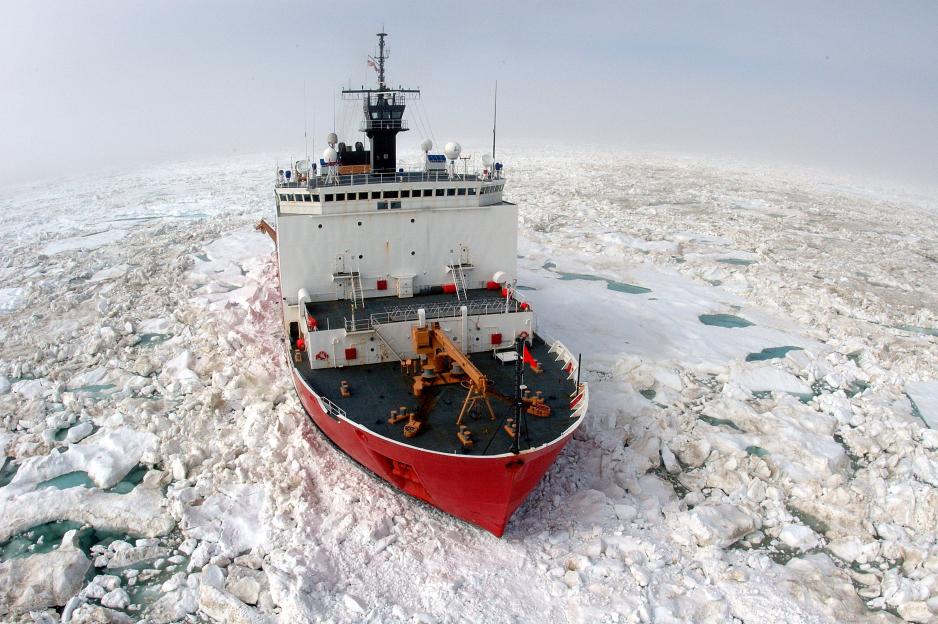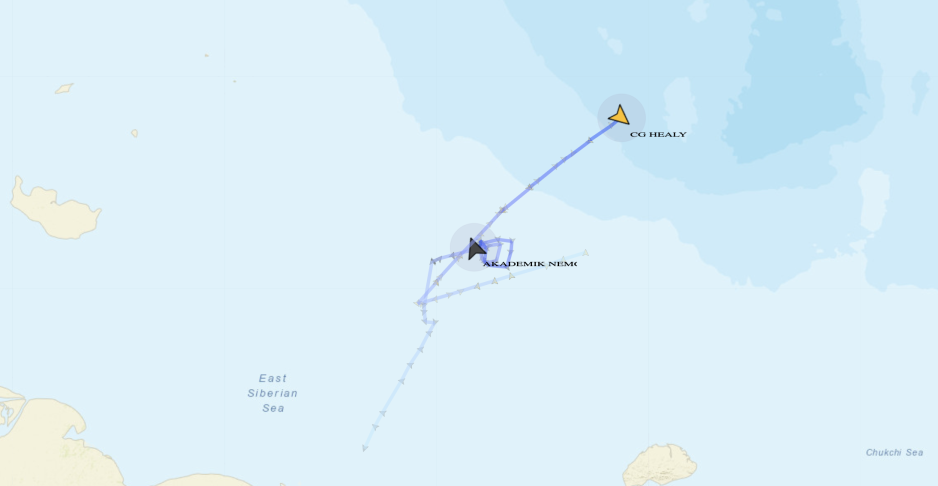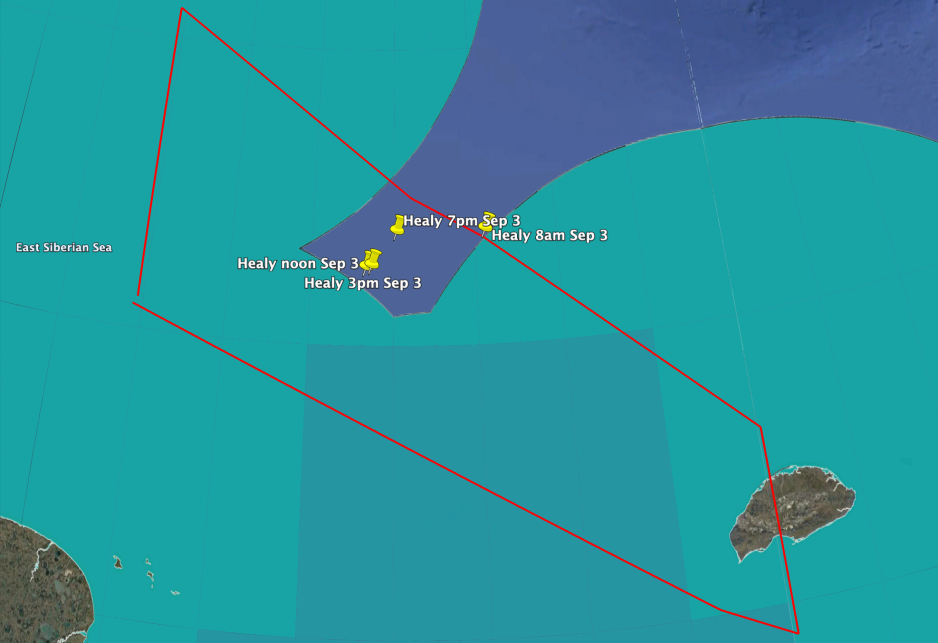Russian Government Vessel Continues to Follow US Coast Guard Icebreaker on Northern Sea Route
Russian survey vessel Akademik Nemchinov steamed from the port of Pevek toward USCGC Healy and has been following its track for the past 48 hours. The US icebreaker continues on its science mission sailing in the East Siberian Sea.

Story originally published by High North News
A few days after US Coast Guard Cutter Healy entered the East Siberian Sea and sailed in proximity to Russia’s Northern Sea Route (NSR) as part of a month-long science expedition to service oceanographic equipment, a government-owned Russian survey vessel continues to follow in its path.
The research and survey vessel Akademik Nemchinov left the port of Pevek on the shore of the East Siberian Sea on 1 September 2023 steaming toward Healy’s location.
The US Coast Guard did not reply to inquiries if the Russian vessel was part of its science mission, but an in-depth news release on the expedition did not suggest any scientific cooperation with other ships. Experts surmise that Akademik Nemchinov is navigating into Healy’s path to keep an eye on it.
“While the reason for the scientific mission leaves no doubt, the interpretation of the routes followed could lead to confusion. Let us not think that a ship of state of a great power neglects this aspect and it is quite deliberate that the Healy may be in the zone where it was joined yesterday by the Russian scientific vessel Akademik Nemchinov. The latter set sail from Pevek, presumably to track it,” explains Hervé Baudu, Chief Professor of Maritime Education at the French Maritime Academy (ENSM).

Arctic researcher Rebecca Pincus, head of the Polar Institute at the Wilson Center, a think tank, voiced a similar analysis of the situation during comments to HNN earlier in the week.
“I would imagine that its progress will be carefully monitored by the Russians.”
Russian rules are a custom
As a state vessel Healy is not subject to requiring authorisation for transit on the NSR and even the Russian requirements for commercial vessels to obtain a permit to travel along the route are not based on international law Baudu emphasizes.
“The NSR regulations are not derived from international regulations. It is simply a custom,” he explains.
Under international law of the UN Convention on the Law of the Sea (UNCLOS) Healy would be permitted to transit the route without prior authorization from Russia, as other state vessels have done in the past.
“It could very well transit along the NSR without requesting anything from Russia. This was the case in September 2018 with the French navy vessel Rhône,” Baudu continues.
“We will have to follow this event to see how the Russians react. But they have no regulatory argument to prevent this ice-breaker [Healy] from going its own way!”
The case would be different if the vessel were to carry out oceanographic survey work in Russia’s Exclusive Economic Zone (EEZ), at which point it would require authorization from the coastal state.

International straits along the NSR
A separate issue would be a transit using the international straits between the various islands of the East Siberian Sea and elsewhere along the NSR. Russia describes these areas as internal waters and recently passed a law against their use by military vessels.
Their use by a US state ship would signify a Freedom of Navigation Operation (FONOP) as the US regularly carries out e.g. in the Taiwan Straits, explains Baudu.
Michael Byers, Professor and Canada Research Chair in Global Politics and International Law at the University of British Columbia, echoes a similar sentiment.
“Russia’s claim of ‘internal waters’ only applies between those islands and the mainland. So, as long as Healy sails north of the islands, everything should be okay. One thing is certain: there is no problem if Russia chooses not to respond.”